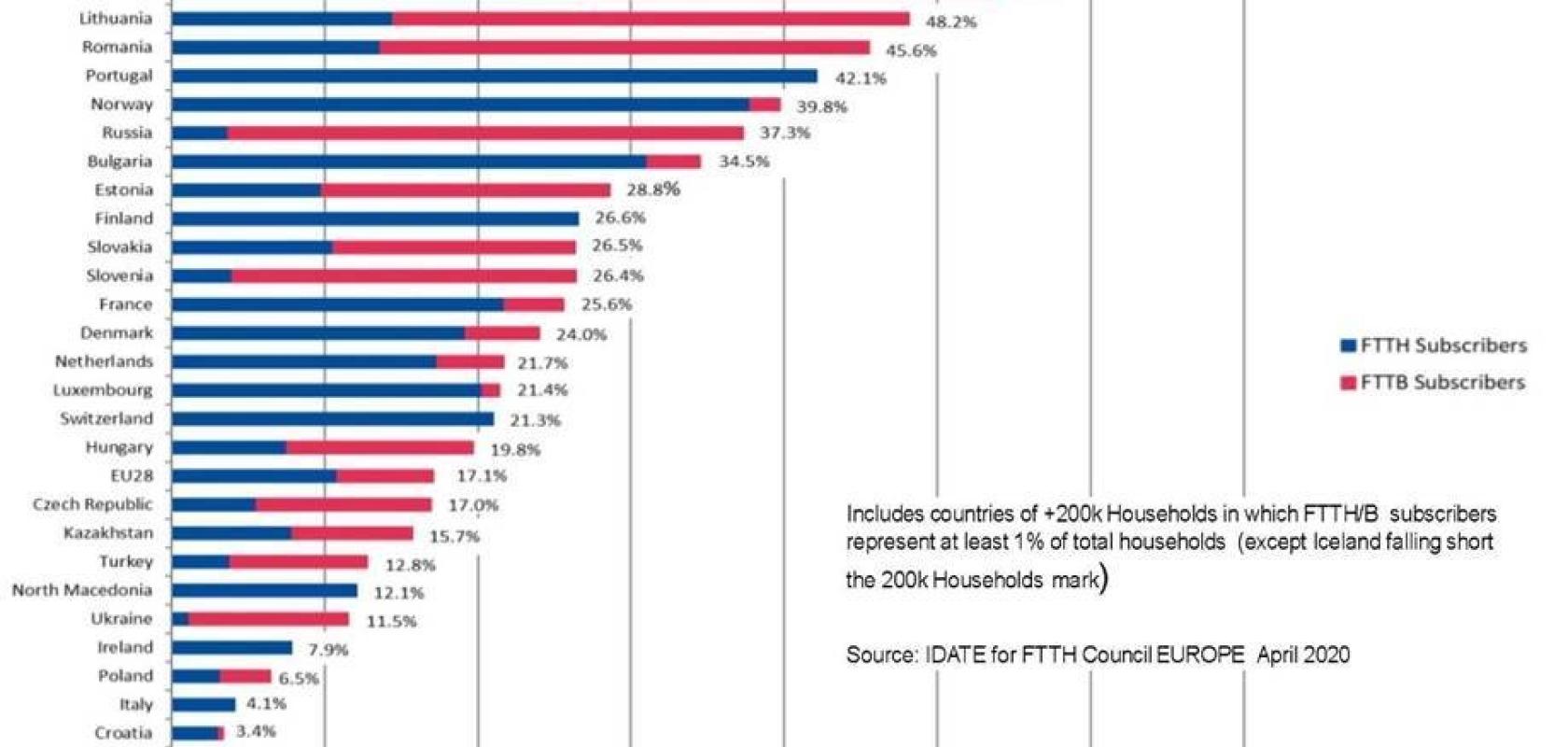The FTTH Council Europe, in partnership with Idate, has revealed the latest 2020 Market Panorama figures, detailing fibre deployment trends in Europe.
Amongst the key findings, was the news that the total number of homes passed with Fibre to the Home (FTTH) and Fibre to the Building (FTTB) in the EU39 countries reached nearly 172 million homes. This is compared with 160 million in 2018, and now 19 countries have more than 2 million homes passed.
The biggest successes for homes passed in absolute numbers come from France, which added 3.5m, Italy, at 1.9m and Spain, with 1.5m. The five countries that saw the highest annual growth rates of homes passed were Belgium, at a massive 307 per cent growth, Ireland, up by 70.4 per cent, Switzerland by 69.1 per cent, the United Kingdom by 50.8 per cent and Germany by 33.5 per cent.
The coverage of both FTTH and FTTB networks in September 2019 was almost 50 per cent according to the findings. In terms of split, EU39 countries reached a 49.9 per cent coverage of FTTH/B networks while EU28 reached 39.4 per cent. This is in comparison with 46.4 per cent and 36.4 per cent in 2018. T
The report also highlighted that fibre technologies have continually evolved over the last few years with a predominance of FTTH architecture over FTTB. Alternative internet service providers (altnets) constitute the largest part of FTTH/B players, with a contribution of around 56 per cent of the total fibre expansion.
Meanwhile, 41 per cent of homes are passed by former incumbent operators. This number will evolve as some of these companies have modified their strategy deploying more FTTH solutions, migrating from existing copper based and cable-based networks towards fibre and are even intensifying copper switch-off. The role of governments and local authorities is also increasing, either directly by signing agreements with telecom players, or via public funds.
Erzsébet Fitori, director general of the FTTH Council Europe said: ‘Ubiquitous and reliable digital infrastructure has never played such a crucial role as today connecting families, enabling business activities and working from home. Very high capacity connectivity is not only mission critical in times of crisis but will also be fundamental for economic recovery and the transition towards a sustainable, green EU economy. Competitive investments in very high capacity networks should, therefore, remain a high political priority and we look forward to working with the EU institutions, national governments and NRAs towards removing bureaucratic and other barriers from the way of network deployment.’
On the all-important rankings, Iceland topped the European FTTH penetration ranking with a 65.9 per cent, penetration rate, de-throning Latvia, which landed fifth, at 53.9 per cent. Belarus was in second place with a 62.8 per cent rate, while Sweden claimed third with 56.8 per cent, dropping Spain into fourth place with 54.3 per cent). Interestingly, for the first time in years, no new country has managed to enter the FTTH/B European ranking.
Kees de Waard, president of the FTTH Council Europe said: ‘The data of this new edition of our Market Panorama confirms the trend that fibre roll-outs are taking place at an increasingly faster pace in Europe. The implementation of the new European Electronic Communications Code and in particular of its Very-High Capacity Networks provision will be essential to meet the ambitions of a Gigabit connected Society in Europe, of which FTTH/B networks, which are the only future-proof infrastructure, are the foundations.’


